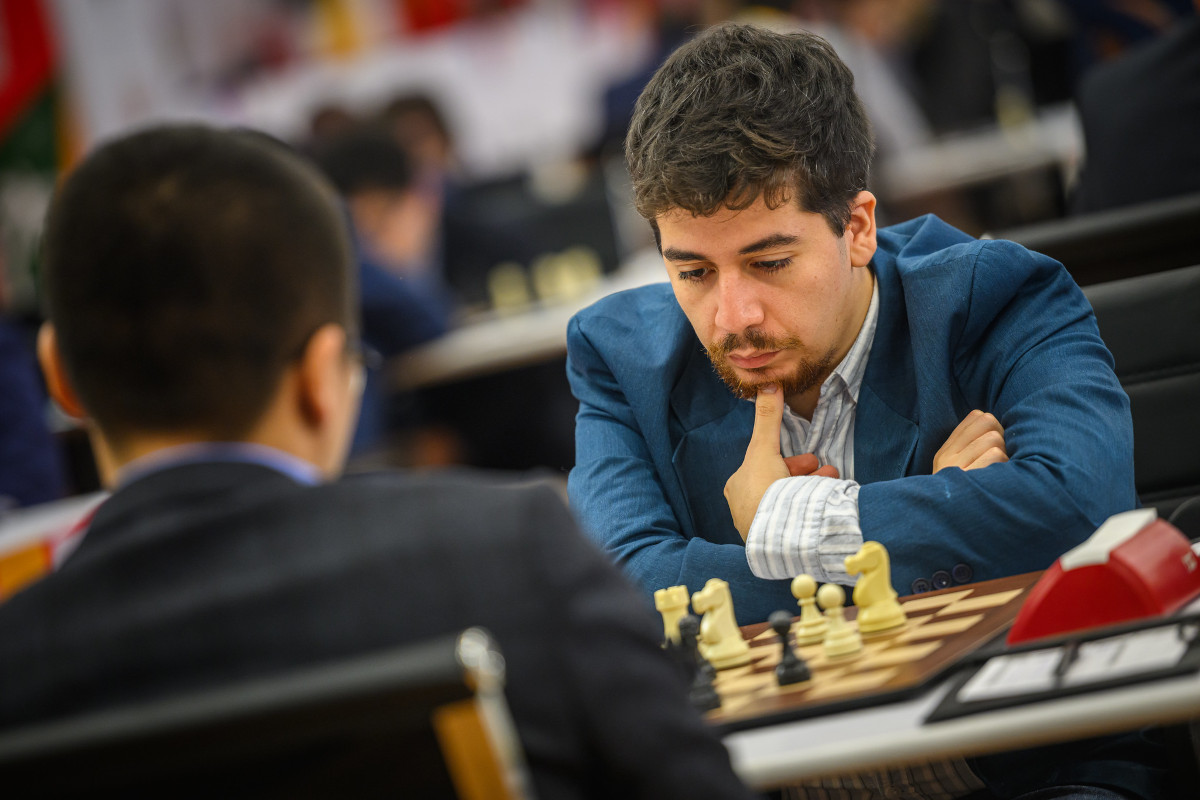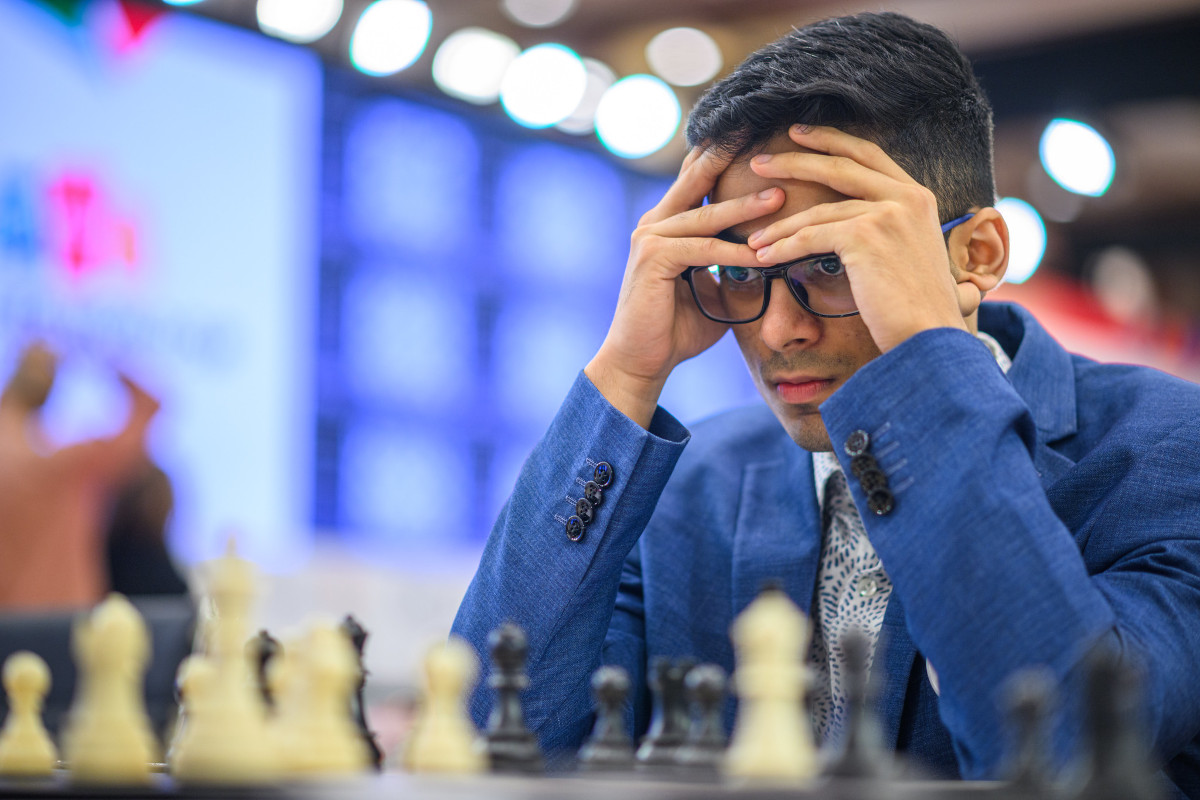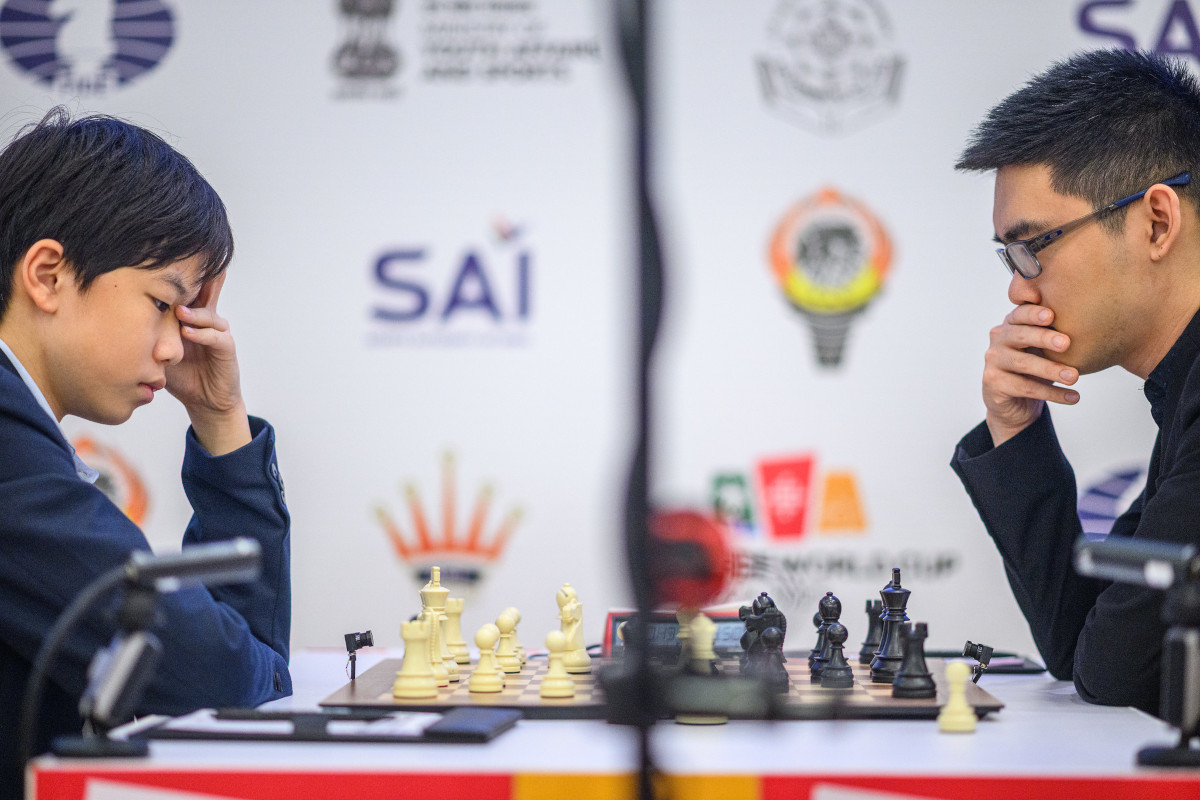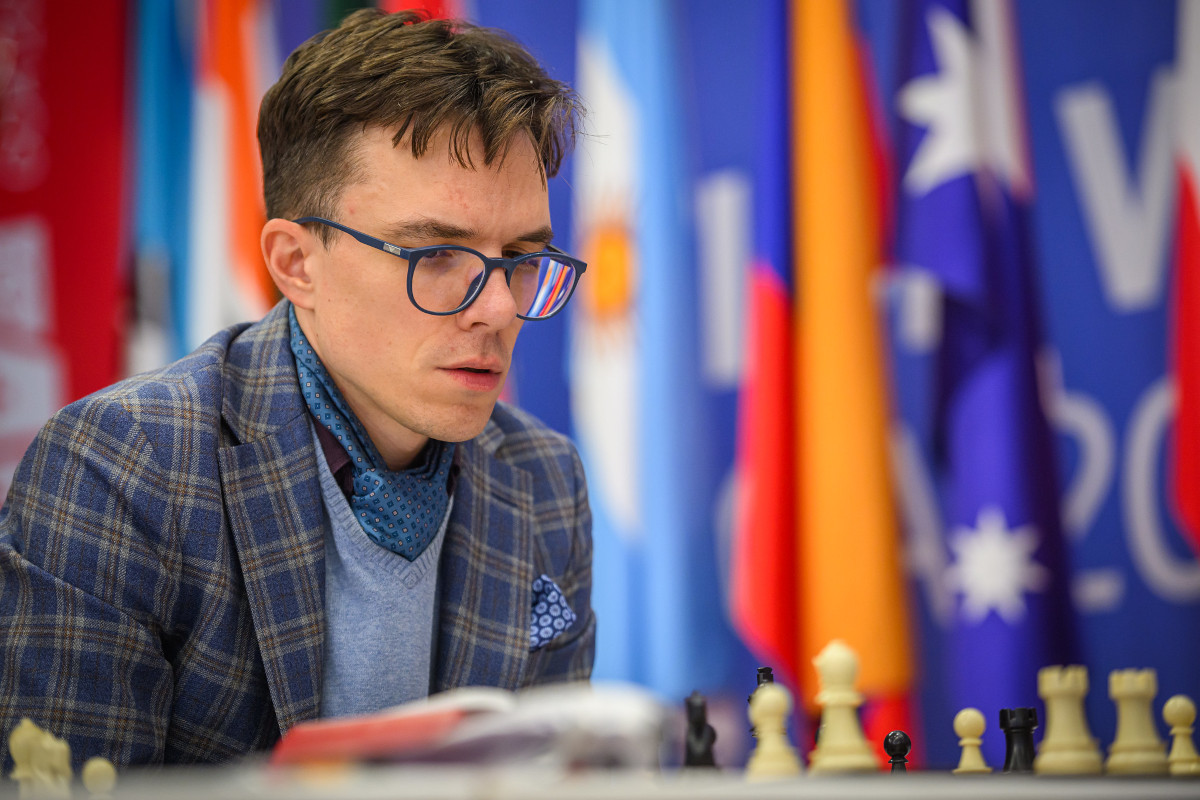Twenty matches go to tiebreaks
Out of the 78 matches that make up the first round of the FIDE World Cup, 58 were decided in the classical phase, with one of the players prevailing either by a 2-0 score (26 matches) or a 1½-½ score (32 matches). The remaining 20 confrontations ended 1-1 and will be settled in Monday’s tiebreaks, consisting of successively faster games at time controls of 15+10, 10+10, 5+3 and 3+2, with a sudden-death decider if required.
Among those 20 matches, four players who had lost their first games managed to bounce back on Sunday to stay in contention:
- IM Aronyak Ghosh (India, 2514), who obtained an upset win on Sunday, beating GM Mateusz Bartel (Poland, 2581) with the white pieces.
- GM José Gabriel Cardoso (Colombia, 2518), who shocked the ever-inventive GM Baadur Jobava (Georgia, 2590) also with white.
- GM Diego Flores (Argentina, 2558), who won on demand against GM Denis Makhnyov (Kazakhstan, 2525).
- GM Cristóbal Henríquez (Chile, 2594), who recovered from the upset loss he suffered on day one against IM Uurtsaikh Agibileg (Mongolia, 2448).

Cristóbal Henríquez | Photo: Michal Walusza

José Gabriel Cardoso | Photo: Michal Walusza
Only three of the 58 matches already decided featured the lower-rated player advancing to round two. The biggest surprise came from IM Wang Shixu, a Chinese player born in 2001 who has never crossed the 2500-rating mark.
Wang, seeded 179th, eliminated 78th seed Leon Luke Mendonca from India. In their first encounter, Mendonca, playing white, obtained a strategic advantage in a complex, queenless middlegame but was unable to convert as Wang showed a tenacious defence until reaching a valuable 50-move draw.
The second game followed a similar pattern, with both players navigating another intricate middlegame. This time, however, Wang, with the white pieces, outplayed his opponent. The critical mistake came on move 42.
Mendonca played 42…Qe2 instead of exchanging queens with 42…Rxf4 43.Rxe1 Rxf3 44.gxf3 Rd7 (diagram), keeping a material balance, though White could have put pressure on his opponent with his bishop pair.
After the text move, Wang responded precisely with 43.Bxd6 Rxf4 44.Bxf4 Bc5 45.d6+ Kh7 46.Rd1, and White’s well-coordinated rook and bishops, combined with the strong central passer, proved far superior to Black’s queen and minor pieces.
In this insightful video course, Grandmaster David Navara shares practical advice on when to calculate deeply in a position — and just as importantly, when not to.
Free sample video: Introduction
Free sample video: Invisible moves
Wang is not new to causing upsets. He notably finished in sixth place at the 2019 World Junior Chess Championship despite being untitled at the time, and later represented China as a junior in two games at the 2021 Online Chess Olympiad.

Leon Luke Mendonca | Photo: Michal Walusza
The other two (slightly) lower-rated players to advance were:
- GM Felix Blohberger (Austria, 2513), who managed to knock out GM Constantin Lupulescu (Romania, 2577).
- GM Martin Petrov (Bulgaria, 2540), who defeated GM Krikor Mekhitarian (Brazil, 2545).
Following Monday’s tiebreakers, the top 50 seeds will enter the competition, including world champion and local favourite Gukesh Dommaraju.

Martin Petrov | Photo: Lennart Ootes
Expert analyses
Xiong 1-0 Li
Analysis by Karsten Müller and Zoran Petronijevic
If one skill decides more games, it’s calculation. Openings fade, plans change – but seeing clearly, comparing lines, and choosing with confidence wins points. In this course GM Ganguly turns calculation into a trainable skill with a structured path for any level. You won’t just solve tactics; you’ll learn how to think: where to start, which branches to explore, when to stop, and how to keep a crystal-clear mental board under pressure.
Free video sample: Introduction
Free video sample: Forcing moves

Li Yiheng facing Jeffery Xiong | Photo: Michal Walusza
Ghosh 1-0 Bartel
Analysis by Karsten Müller

Mateusz Bartel | Photo: Michal Walusza
All games
The Ragozin Defence (1.d4 Nf6 2.c4 e6 3.Nf3 d5 4.Nc3 Bb4) has become a cornerstone of modern chess theory. With 3.Nf3 gaining popularity as a way to avoid Nimzo-Indian setups and the challenges Black faces in the Queen’s Indian, the Ragozin offers a solid and dynamic alternative.
Free video sample: Introduction
Free video sample: 5.cxd5 exd5 6.Bf4
